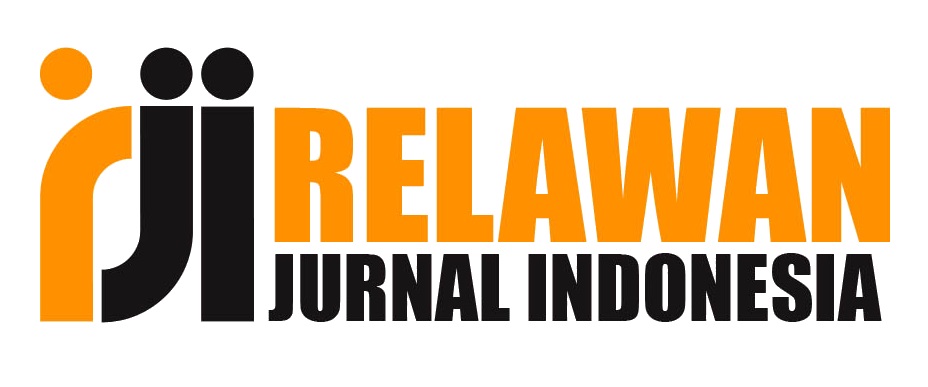Students' Perception on Using English Language Fantasy Movies to Enhance Vocabulary Mastery in English Education
DOI:
https://doi.org/10.57176/jn.v5i1.193Keywords:
English movies, students' perception, vocabulary masteryAbstract
Penelitian kualitatif studi kasus ini mengkaji persepsi mahasiswa terhadap penggunaan film berbahasa Inggris untuk akuisisi kosakata. Data dikumpulkan melalui wawancara semi-terstruktur dengan empat mahasiswa Program Studi Pendidikan Bahasa Inggris di Universitas Palangka Raya yang memiliki kebiasaan menonton film berbahasa Inggris. Data kemudian dianalisis secara tematik, yang menghasilkan lima tema utama: (1) pengalaman pertama dengan film fantasi berbahasa Inggris, (2) manfaat yang dirasakan, (3) efektivitas akuisisi kosakata, (4) teknik pembelajaran, dan (5) integrasi film ke dalam pendidikan formal. Temuan mengungkapkan bahwa film menyediakan input otentik dan multimodal yang mendukung pembelajaran kosakata, baik secara insidental maupun intensional. Keberhasilan pembelajar dipengaruhi oleh strategic engagement (keterlibatan strategis), seperti pencatatan, penggunaan kamus, penerjemah, dan refleksi. Durasi paparan terhadap bahasa juga menjadi faktor yang membedakan pembelajar pemula dini dan pemula terlambat. . Para partisipan menekankan bahwa bimbingan guru melalui kegiatan pre-, during-, dan post-viewing meningkatkan pemahaman, menopang (scaffold) akuisisi kosakata, serta mengatasi tantangan seperti dialog cepat atau subtitle yang tidak akurat. Studi ini memberikan bukti kualitatif yang mendukung Input Hypothesis Krashen dan Noticing Hypothesis Schmidt, dengan menunjukkan interaksi antara faktor kognitif dan afektif dalam pembelajaran berbasis film. Hasil ini menyoroti potensi pedagogis dari integrasi film berbahasa Inggris ke dalam pengajaran formal.Pendekatan yang terstruktur, menarik, dan berpusat pada pembelajar terbukti dapat mengoptimalkan penguasaan kosakata sekaligus menjaga motivasi dan paparan bahasa yang otentik. Untuk penelitian mendatang, disarankan menggunakan desain eksperimental atau longitudinal guna mengukur peningkatan yang terukur dan menyelidiki lebih lanjut mekanisme yang mendasari pembelajaran bahasa melalui media audiovisual.
__________________________________________________________________________________________
This qualitative case study investigates students’ perceptions of using English-language films for vocabulary acquisition. Data were collected through semi-structured interviews with four students from the English Education Study Program at the University of Palangka Raya who regularly watch English-language films. The data were then analysed thematically, resulting in five main themes: (1) first experiences with English fantasy films, (2) perceived benefits, (3) effectiveness of vocabulary acquisition, (4) learning techniques, and (5) integration of films into formal education. The findings reveal that films provide authentic and multimodal input that supports both incidental and intentional vocabulary learning. Learners’ success is influenced by strategic engagement, such as note-taking, dictionary use, translation, and reflection. The duration of language exposure also distinguishes early and late beginners. Participants emphasized that teacher guidance through pre-, during-, and post-viewing activities enhances comprehension, scaffolds vocabulary acquisition, and helps overcome challenges such as fast-paced dialogues or inaccurate subtitles. This study provides qualitative evidence supporting Krashen’s Input Hypothesis and Schmidt’s Noticing Hypothesis, demonstrating the interaction between cognitive and affective factors in film-based learning. The results highlight the pedagogical potential of integrating English-language films into formal instruction. A structured, engaging, and learner-cantered approach can optimize vocabulary mastery while maintaining motivation and exposure to authentic language. Future research is recommended to employ experimental or longitudinal designs to measure observable improvement and further explore the underlying mechanisms of language learning through audiovisual media.
References
Abdulrahman, M., & Kara, A. (2023). Integrating subtitles and teacher guidance in English vocabulary learning: Effects on retention and comprehension. Journal of Language Teaching and Research, 14(2), 45–60. https://doi.org/10.17507/jltr.1402.05
Adrefiza, A., Rahman, E., & Fauziyah, R. A. (2024). The effect of English-language movies on vocabulary mastery:
Receptive and productive perspectives. Journal of English Language Education, 12(1), 22–35.
Alharthi, M. (2020). Supporting vocabulary acquisition through film: Pre-viewing and while-viewing strategies. Language Learning Journal, 48(3), 301–316. https://doi.org/10.1080/09571736.2020.1714205
Ashcroft, R., Nation, I. S. P., & Coxhead, A. (2019). Enhancing incidental vocabulary acquisition through audiovisual materials. TESOL Journal, 10(1), e00345. https://doi.org/10.1002/tesj.345
Braun, V., & Clarke, V. (2006). Using thematic analysis in psychology. Qualitative Research in Psychology, 3(2), 77–101. https://doi.org/10.1191/1478088706qp063oa
Clouston, S. (2013). Vocabulary in language learning and teaching. Language Education Review, 7(1), 15–29.
Creswell, J. W. (2013). Qualitative inquiry and research design: Choosing among five approaches (3rd ed.). SAGE Publications.
Dang, T. T., & Webb, S. (2021). Using authentic materials to improve vocabulary knowledge: Implications for teaching. English Teaching & Learning, 45(2), 113–132. https://doi.org/10.1007/s42321-021-00015-0
Fauzi, R., & Muljanto, C. (2021). English films as a medium for incidental vocabulary acquisition among university students.
Journal of English Education Studies, 6(1), 51–65.
Fitriyani, R. (2023). The role of vocabulary mastery in English academic achievement. Journal of Applied Linguistics, 14(2), 75–88.
Ismaili, E. (2013). Film in the language classroom: Benefits and strategies. Mediterranean Journal of Social Sciences, 4(5), 325–330. https://doi.org/10.5901/mjss.2013.v4n5p325
Knott, A., Smith, B., & Johnson, T. (2022). Conducting semi-structured interviews in higher education research. International Journal of Qualitative Methods, 21, 1–12. https://doi.org/10.1177/16094069221078912
Krashen, S. D. (1985). Principles and practice in second language acquisition. Pergamon Press.
Krashen, S. D. (1985). The input hypothesis: Issues and implications. Longman.
Montero Perez, M., Peters, E., & Webb, S. (2013). Learning vocabulary from movies: Effects of repeated exposure and active engagement. Language Learning Journal, 41(3), 223–240. https://doi.org/10.1080/09571736.2013.797219
Muñoz, C. (2014). Age and the rate of foreign language learning. System, 42, 87–99. https://doi.org/10.1016/j.system.2013.12.001
Nation, I. S. P. (2013). Learning vocabulary in another language (2nd ed.). Cambridge University Press.
Peters, E., & Webb, S. (2018). Incidental vocabulary acquisition from watching English-language media. Language Teaching Research, 22(2), 122–138. https://doi.org/10.1177/1362168816658102
Rao, Z. (2019). English as a global language and its implications for teaching. International Journal of Language Studies, 13(1), 45–60.
Sari, F., & Aminatun, I. (2021). Enhancing students’ vocabulary mastery through English movies. ELT Research Journal, 10(2), 77–91. https://doi.org/10.22555/elt.v10i2.3254
Schmidt, R. (1990). The role of consciousness in second language learning. Applied Linguistics, 11(2), 129–158. https://doi.org/10.1093/applin/11.2.129
Sundqvist, P., & Sylvén, L. K. (2016). Extramural English in teaching and learning: From theory to practice. Palgrave Macmillan.
Tumengkol, P., Rahman, E., & Maida, N. (2022). Motivational aspects of audiovisual materials in English learning. Journal of Language Motivation, 8(1), 34–50.
Vanderplank, R. (2016). Digital video for language learning: Technologies, pedagogies, and research. Routledge.
Webb, S., & Nation, I. S. P. (2017). How vocabulary is learned. Oxford University Press.
Webb, S., & Rodgers, M. P. H. (2009). Vocabulary demands of television programs. Language Learning, 59(2), 335–366. https://doi.org/10.1111/j.1467-9922.2009.00513.x
Yuksel, D., & Tanriverdi, M. (2009). The effect of watching English films on vocabulary acquisition. Journal of Language and Linguistic Studies, 5(1), 78–91.
Yoga Pratama, R., Fauzi, R., & Aminatun, I. (2025). Enhancing vocabulary retention through authentic audiovisual input in higher education. Journal of English Language Learning, 15(1), 10–27.
Downloads
Published
How to Cite
Issue
Section
License
Copyright (c) 2025 Ayonia Jelita Boru Sinaga, Tiarannisa Putri Lestari, Olga Dona Retsi, Muhammad Subhan Fikri

This work is licensed under a Creative Commons Attribution-ShareAlike 4.0 International License.
You are free to:
- Share — copy and redistribute the material in any medium or format for any purpose, even commercially.
- Adapt — remix, transform, and build upon the material for any purpose, even commercially.
- The licensor cannot revoke these freedoms as long as you follow the license terms.
Under the following terms:
- Attribution — You must give appropriate credit , provide a link to the license, and indicate if changes were made . You may do so in any reasonable manner, but not in any way that suggests the licensor endorses you or your use.
- ShareAlike — If you remix, transform, or build upon the material, you must distribute your contributions under the same license as the original.
- No additional restrictions — You may not apply legal terms or technological measures that legally restrict others from doing anything the license permits.
Notices:
You do not have to comply with the license for elements of the material in the public domain or where your use is permitted by an applicable exception or limitation .
No warranties are given. The license may not give you all of the permissions necessary for your intended use. For example, other rights such as publicity, privacy, or moral rights may limit how you use the material.
















